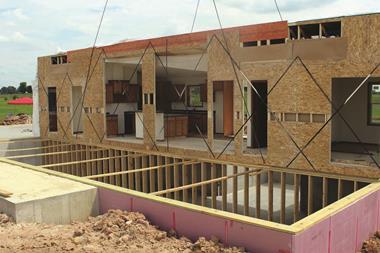We are undoubtably living through times of unprecedented economic uncertainty and financial volatility, the consequences of which are being felt most severely by many in the housing market. As 2023 gets under way, here’s my take on the three property trends to watch for in 2023.

The buzz around the tiny-house movement – a trend that advocates for downsizing living spaces – is increasing and I expect this to be the most important home design revolution over the next decade. Closely linked to homebuyers’ growing concern about their homes’ green credentials and energy bills, and propelled by the cost-of-living crisis and the millennial desire for freedom of movement, I expect the tiny-house movement to have its moment in 2023 and beyond.
I can certainly see how the idea that having less space and stuff can create room in our lives for more important things is an appealing one. Modular, portable tiny eco-house models and intelligent living space apartments have been developed, often in an insulated, timber-framed structure to ensure low energy usage. As development finance lenders, we’ve witnessed a trend whereby property developers are moving towards smaller homes.
New housing starts: expect a plunge
Much of what’s been written about property over the past few months has focused on the economic slowdown’s near-term impact on the property market, with analysts fixated on the size of this year’s price decline. But my real concern is about the slowdown’s longer-term impact on housing supply, for I believe that the current credit tightness has a more subtle, perhaps less visible, and longer-term impact on prospective homebuyers by affecting housing supply in an already undersupplied market.
Despite a government target of building 300,000 new houses per year in the UK, units completed in England have remained below 180,000 units per year so far, falling from their peak of 178,000 in 2019 to 147,000 in 2020 due the pandemic and remaining weak since due to the rising cost of materials. Capital Economics expects completions of 187,000 housing units last year, a highly unlikely number, to decline by 14% to 160,000 this year, and then to continue to drop to 140,000 in 2024 and 2025.
Housing starts are expected to witness an even sharper decline, down by nearly 40% from an expected 178,000 units last year to just 110,000 this year and next before recovering to 130,000 units in 2025. A grim picture? Certainly so. An unresolved challenge? Certainly not. I strongly believe that specialist lenders can and must be part of the solution to avoid a protracted impact on housebuilding activity.
A grim picture? Certainly so. An unresolved challenge? Certainly not. I strongly believe that specialist lenders can and must be part of the solution to avoid a protracted impact on housebuilding activity.
The search for green
According to the former prime minister Boris Johnson, “green is good, green is right, green works”. This certainly seems to be the current sentiment among prospective homebuyers who are increasingly taking notice and searching for green features when looking for a home. The sentiment is mirrored by landlords who are now keener to review their portfolios to assess whether the investment in making upgrades is worth the return, which according to the data it seems to be.
According to the Rightmove Green Homes report 2022, there are now 73% more green features in property listings compared with 2020 and improving a home from an F to a C rating could add an additional 16% to a property’s value.
As climate change and energy costs become much more important considerations, I anticipate this trend will not only continue but intensify this year. I therefore expect buyers to be much more aware of the features of a home that will need changing to make it more energy efficient.
Roxana Mohammadian-Molina is chief strategy officer at property development finance lender Blend
































No comments yet